
How I Turned My Idea Into A Product
Ideation
We all get great ideas. Some ideas work, while others don’t. Have you wondered why those ideas don’t work? Based on my experience, a good number of my ideas didn’t work because I was unable to sell them to the intended audience. I was unable to convince them, or perhaps I tried the wrong approach in telling them that this was a great idea. I went to the extent of becoming judgemental towards those who didn’t accept my ideas. Have you experienced something similar, when you feel your ideas aren’t working out the way you want them to?
During the end of 2010, with lot of encouragement from my colleagues, I found a great outlet for sharing my thoughts my ideas via my Essence of Testing blog. I created a few open source tools related to testing (WAAT, TaaS) and was speaking at conferences. However, my next idea had the potential to be bigger than before - it was Test Trend Analyzer (TTA).
This is the story of my journey of how I used the power of influence to create a MVP (Minimum Viable Product) for my idea.
The Innovation Trigger
In 2013, I stumbled upon the book – Fearless Change: Patterns for introducing New Ideas by Mary Lynn Manns and Linda Rising. The patterns in the book helped me tremendously while trying out new ideas, including TTA.
Note: All the patterns mentioned below are part of the existing book – “Fearless Change: Patterns for introducing New Ideas”, or the upcoming update to the book – “More Fearless Change: Patterns for Introducing New Ideas”. I strongly recommend this book to everyone.
The Journey from Ideation to Productization!
Here’s how I used some of the patterns from the book to share and propagate TTA to a wider audience, and to get buy-in.
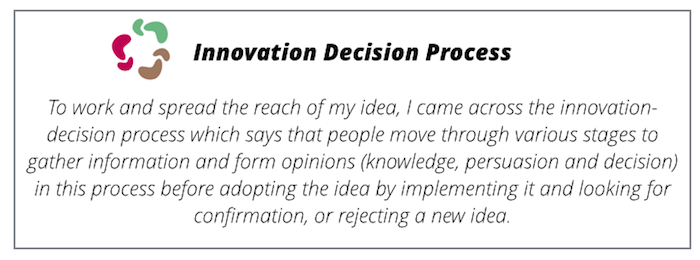
I shared my idea with colleagues and people in the industry to validate the idea. Once I got a fair understanding of what others thought about the idea, and the potential resistance to it, I created a roadmap of how to take this forward in order to create an MVP. This was an essential step for making the concept a reality - and would also make it easier to showcase to the audience in form of a real product what value TTA can bring to the table. Most importantly - this would validate the idea for myself - and prove it either worked, or didn’t.
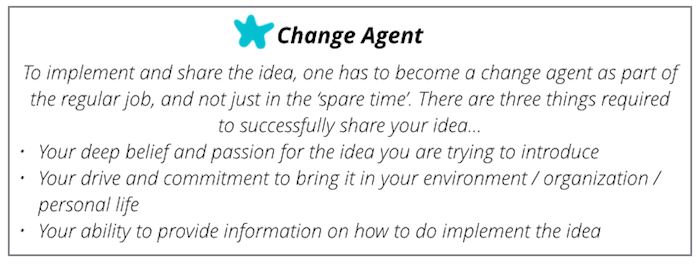
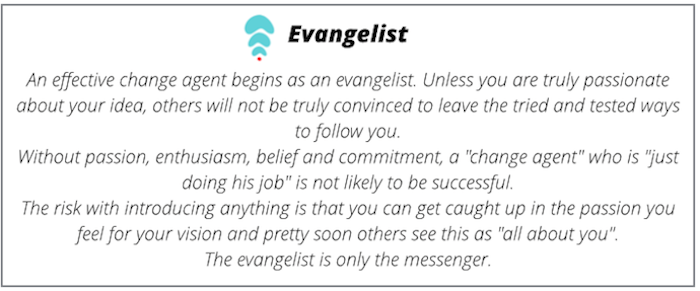
Being a full-time change agent for my idea was appealing to me. Though TTA was my pet-project, I had to ensure I was fully committed to getting a concrete outcome from the idea - not just for me, but also for those around me. I became the change agent, and also an evangelist - sharing, and encourage others to experiment and come on board. I spoke a lot about TTA - in Thoughtworks, at external conferences and also helped adopt TTA in a few projects I was working on, where it made sense to use it.
The key aspect I learnt from the evangelist pattern was not to get so close or caught up with the idea, that I lose the objective of the idea. This constantly reminded me that TTA was not all about me, but more about the concept and how it can help others solve specific problems.
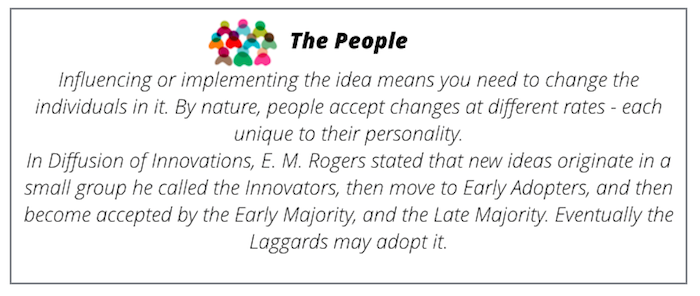
Understanding this was a turning point of my thought process in influencing and introducing ideas. My focus now remains on the former categories of people, and now I don’t focus or think much about the Late Majority or the Laggards. My energy is conserved, my attitude now remains more positive and I do not get as disheartened by lack of adoption by certain set of people. Eventually - it’s all about people!

It is important to listen to what the individuals are saying when they hear about your new idea.

Lee Iacocca reflected: "It's important to talk to people in their own language. If you do it well, they'll say, 'God, he said exactly what I was thinking'. And when they begin to respect you, they'll follow you to the death. The reason they're following you is not because you're providing some mysterious leadership. It's because you're following them."
I used to think about why people aren’t able to relate to ideas and act on them - after all, they were great ideas! The lack of enthusiasm and motivation by some people around me used to frustrate me.
The loose categorisation (Innovators, Early Adopters, etc.) of the people around me helped me stay positive and focussed to work with the Innovators and Early Adopters. This group was more than sufficient for me to get started on doing sometime, to implement the MVP for TTA.
I realised along the way was that a person - who may be an Innovator for one idea, may be a Laggard for another idea. So it’s not that each person fits in only one criteria, regardless of the idea. In fact, each idea determines which criteria individuals fit in! I could easily envision myself being in each of the categories based on different types / themes of ideas.
A little introspection based on the Personal Touch and the Tailor-made pattern helped me realise that just categorising and working with specific set of people will not be sufficient.
I learnt to tweak the message based on (my mental) categorisation and the role of each person (developer, tester, project manager, business analyst, general manager, leads, other managers, etc.). This is very important because TTA serves different purposes for different roles. For Managers, Leads, CxOs, the Trend Analysis features would be more important, while for Team members, the Failure Analysis features would be more important. So each person needs to know what and why based on their interest.

Initially, I thought that TTA has huge potential as a product but I needed to get the buy-in and support from all the people possible. When I started doing that, I hit one road-block after another. There were so many questions, cross-examinations, concerns, doubts - (all with good intent for sure) to ensure the idea is robust and most of the necessary details have been thought out and accounted for … that we ended up spending a lot of time talking and thinking about what should be done.
The Just do it pattern helped me to think about the most relevant and high priority questions, answer them, and then start the implementation of an MVP to see what the concept really meant.
Current State and Next Steps
TTA is available on Github as an open-source product. I have spoken at many conferences and forums about it. There is very good feedback about the concept and need for such a product. I am now working to take this forward to the next level and make it enterprise ready.
This helped the team to get very quick feedback, change direction based on new understanding from implementation (not concepts) - and as a result do something that turned out to be valuable from TTA perspective.
I am looking for help from Innovators / Early Adopters / Early Majority for more analysis, development, testing, or simply using and providing feedback. Do you fit in that role? Reach out to tta@thoughtworks.com or anand.bagmar@thoughtworks.com and I will help you get started!
Icing on the Cake - Meeting Linda Rising!
When I visited Nashville, TN for Agile Conference 2013 to speak about TaaS, I had the opportunity to listen to Linda Rising, the author of the book that inspired me.
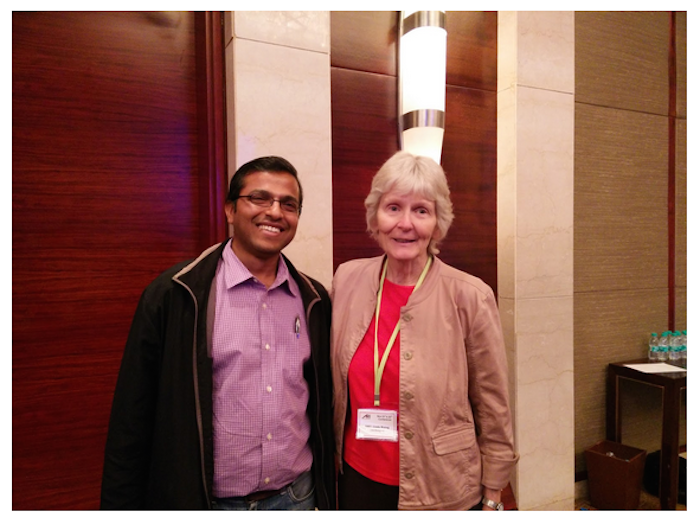
Later, Linda ran a workshop on Fearless Change: Patterns for introducing New Ideas at Agile Pune 2014, my home town. I jumped and grabbed the opportunity to be part of this 2-day workshop.
Though the patterns and ideas presented were in the context of work (agile / software development), I am sure, and reaffirmed by Linda, that these patterns are very applicable in each of our personal lives too.
But more of that in another post!
Disclaimer: The statements and opinions expressed in this article are those of the author(s) and do not necessarily reflect the positions of Thoughtworks.














